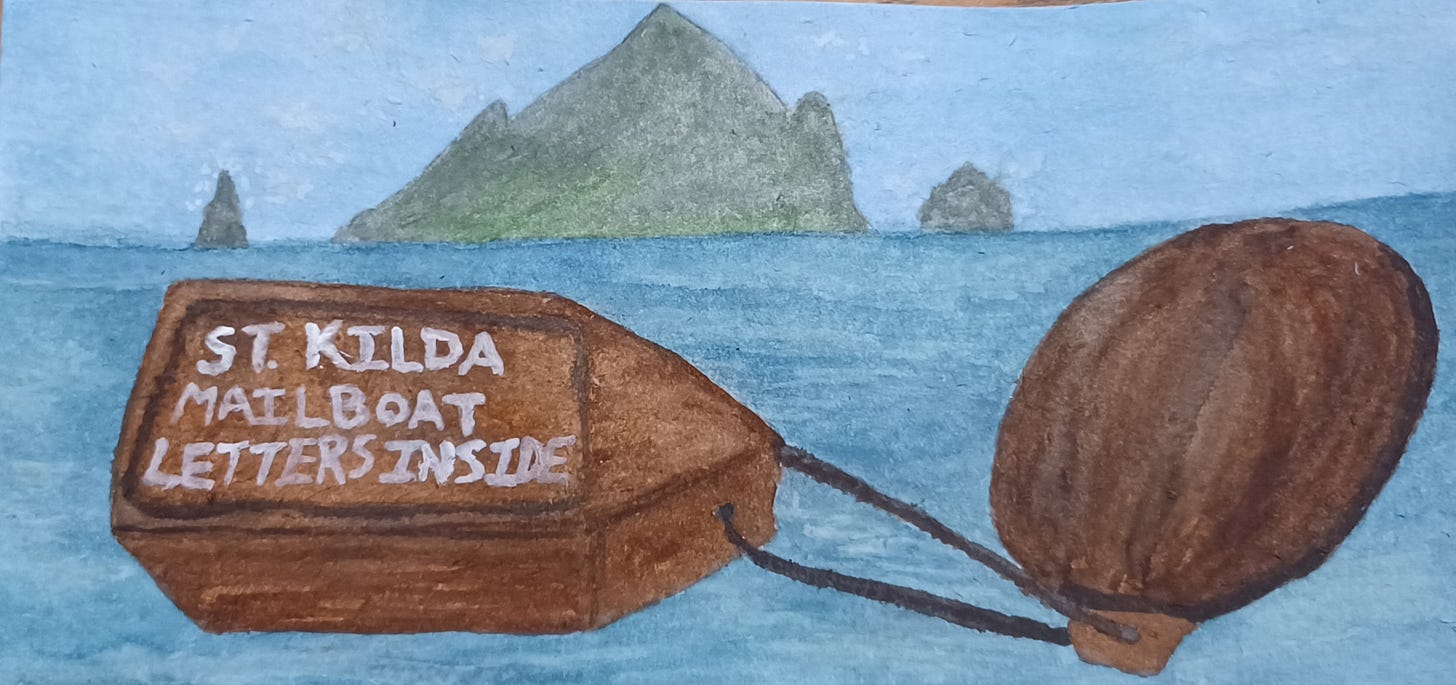Eileanan, a journey around Scotland’s islands: St Kilda - Part 1 of 6
In a six part journey - Michelle takes us through a potted history of many of the islands off the North Coast of Scotland
The allure of Scotland's islands, have a captivating narrative that tugs at my heartstrings, and in particular they have an enchantment that is so intertwined with our natural and cultural heritage. I hope over the next few months to unveil few of my favorites for you.
Among these isles, the St. Kilda archipelago stands out - not only for its sheer remoteness, with no land between it and Canada - but also for the profound stories that endure and its unique wildlife.
St Kilda holds the distinction of being Scotland's first World Heritage Site, acknowledging both its cultural significance and its ecological importance. This recognition places it on the same level as globally renowned locations such as the Galapagos Islands and the Great Barrier Reef!
As the premier seabird breeding ground in Europe, St Kilda is home to an impressive 680,000 breeding seabirds, making it a key site in the north east Atlantic for a variety of species, including vast numbers of gannets, puffins, and fulmars.

It was also once home to the Great Auk, a majestic bird persecuted to extinction. The great auk bred on rocky, remote islands that offered easy access to the ocean and an abundant food supply. Such ideal breeding sites were rare, limiting their numbers. Outside of the breeding season, these birds foraged in the North Atlantic, venturing as far south as northern Spain and along the coasts of Canada, Greenland, Iceland, the Faroe Islands, Norway, Ireland, and Great Britain.
Standing just under 1m tall and weighing around 5 kg, the great auk was the largest alcid species to survive into the modern era and the second-largest in the alcid family, surpassed only by the prehistoric Miomancalla. It featured a black back, a white belly, and a robust, hooked black beak with grooves. In summer, it displayed a distinctive white patch over each eye, which transformed into a white band stretching between the eyes during winter. The great auk's wings were small only 15cm making it flightless. However, it was a formidable swimmer, using this ability to hunt its preferred prey of fish, such as Atlantic menhaden and capelin.
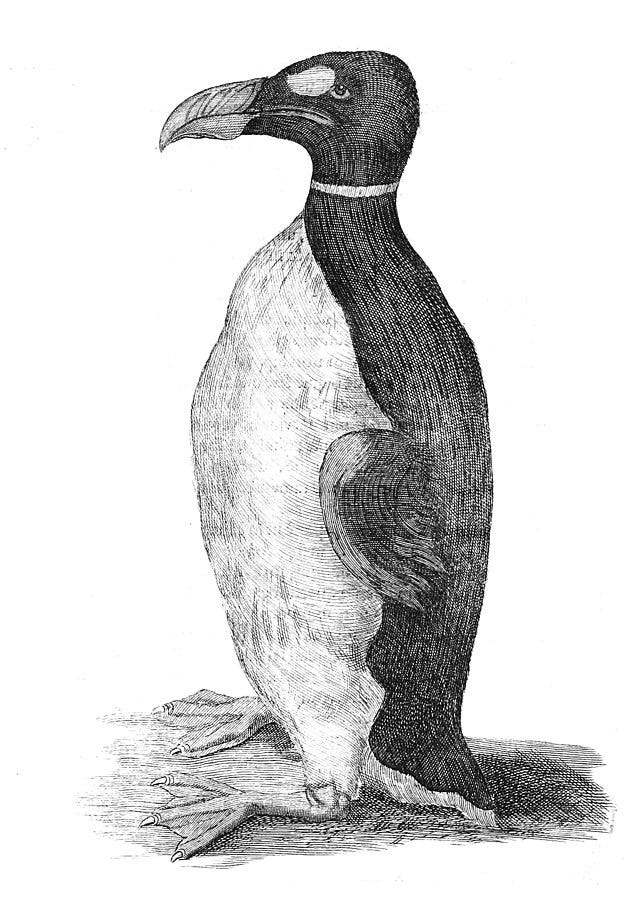
While adept in water, it was awkward on land, which made it easy prey, so perhaps unremarkably, the great auk served as a food source for Neanderthals more than 100,000 years ago, as evidenced by well-cleaned bones found by their campfires. In 1553, the great auk received its first official protection and 200 years later, in 1794, Great Britain banned the killing of this species for its feathers, highlighting the early recognition of its need for conservation.
Tragically, on the islet of Stac an Armin, St. Kilda, Scotland, in July 1840, the last great auk seen in Britain was caught and killed. Three men from St. Kilda captured a solitary bird. They kept the bird alive for three days, but when a large storm arose, they believed it to be a witch causing the storm and killed it by beating it to death with a stick.
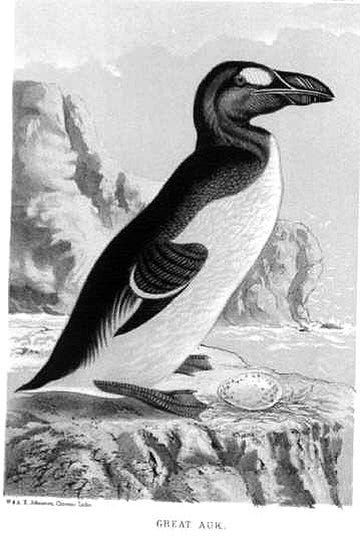
It was by todays standards a harsh existence living on this isle, but the St. Kildan’s had a symbiotic relationship with their surroundings. There were no fruits or vegetables available, except for a few low-quality potatoes. The islanders' diet consisted of oatmeal, salted fowl, and seabird eggs during the summer, which they harvested by hand from the sea cliffs. In the winter they ate salted mutton.
Fulmar feathers were highly prized for stuffing in garments and bedding, providing insulation in colder climates. This was a commodity that, while valuable, brought its own set of challenges due to the fulmars' defensive, foul-smelling oil - vomited onto the collectors. This oil - did have a use and in a society where nothing is wasted - was a useful for the St. Kildans - they used it for lighting their lamps.
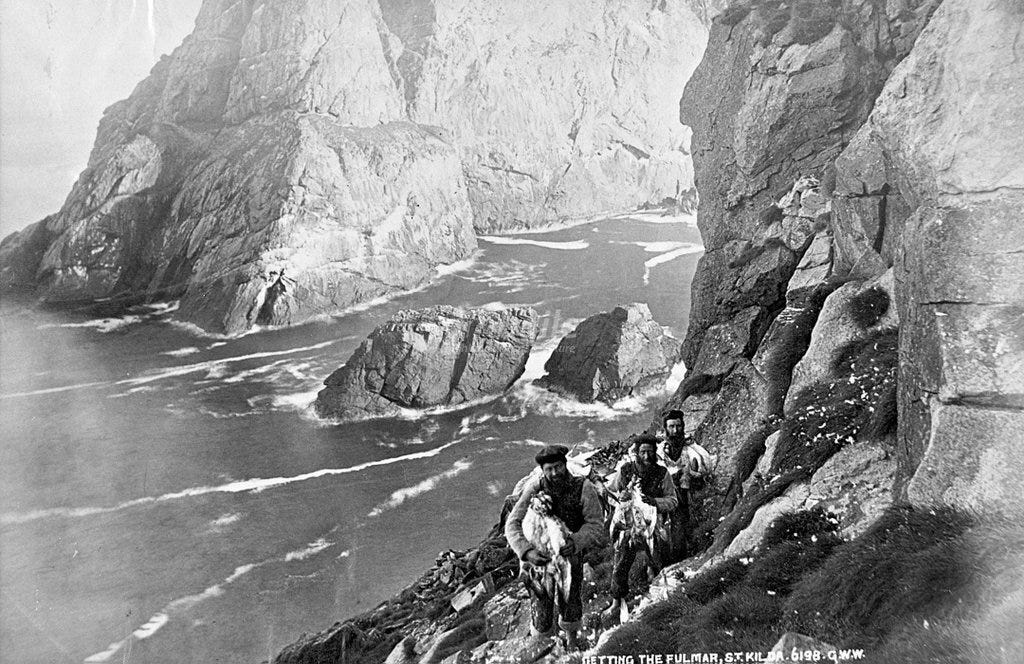
Adult fulmars, graceful mariners of the mid-Atlantic, spend their days out at sea, only returning to land to breed. A century ago, St. Kilda was the sole sanctuary for fulmars in the British Isles. Until the islands were evacuated in 1930, the St. Kildans conducted an annual harvest, taking up to 10,000 birds each year. The sudden absence of this predation triggered a population boom, pushing some Fulmars to seek new nesting grounds. Around the same time the rise of commercial fishing provided fulmars with abundant food from discarded fish offal, enabling their expansion. By 1921, the first breeding pair had been recorded in County Antrim, Northern Ireland.
At the dawn of 1930, the St Kilda community found itself on the brink of desolation, with only 36 souls remaining: thirteen men, ten women, eight girls, and five boys. Among these, just two families had more than two children, and the community was spread across ten humble households. Yet, the seeds of their decline were sown much earlier, in the mid-19th century, as contact with the wider world steadily increased. The arrival of regular tourist cruises had brought curious visitors to St Kilda's shores. The islanders, in turn, crafted goods to sell to these visitors—sheepskins, knitted gloves, stockings, scarves, eggs, and ornithological treasures.
On the windswept, rain-soaked Atlantic isle, the St. Kildans wove and wore tweed garments, the warmth and near-waterproof qualities of the fabric perfectly suited to the harsh climate. This versatile fabric also served as a form of rent payment and was traded with the tourists who braved the journey to these remote islands throughout the 19th and 20th centuries.
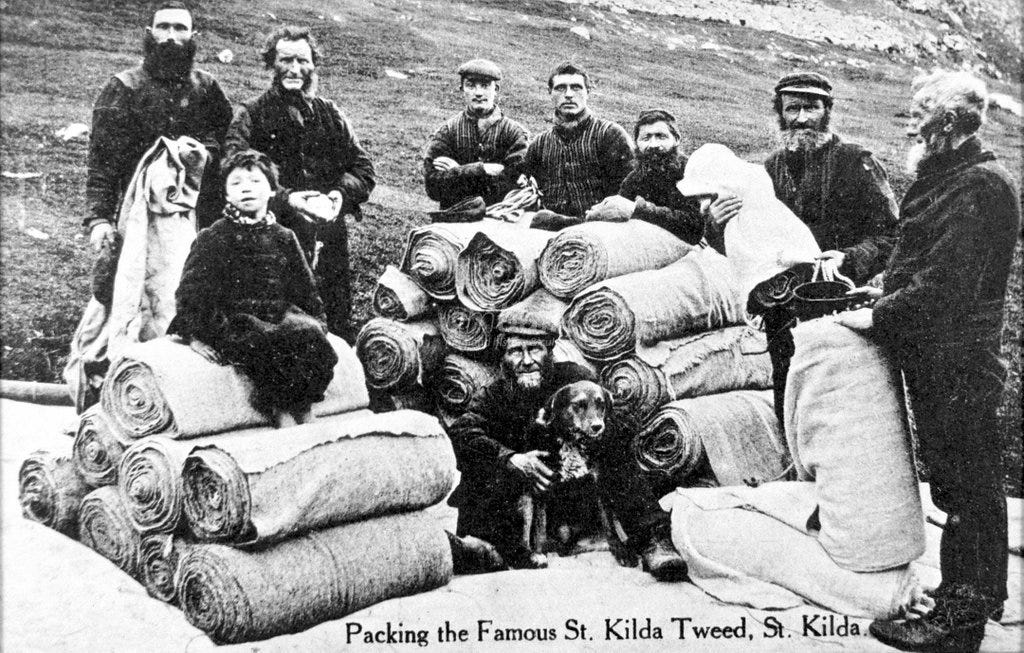
Whalers and fishing fleets also plied the waters, delivering much-needed supplies. Slowly but surely, the St Kildans grew reliant on imported food, fuel, materials and furnishings for their homes.
Their sense of isolation deepened, particularly with the erratic nature of communications. In 1876, amidst a dire food shortage, they launched the first St Kilda mailboat as a cry for help. A letter, encased in a wooden container buoyed by a sheep's bladder, was cast into the sea. Many such mailboats were launched thereafter, carried by the merciful currents and found their way to shores in Scotland or Scandinavia.
The hardships continued to mount. In 1912, severe food shortages gripped the island, followed by an influenza outbreak in 1913. The Great War ironically brought temporary relief in the form of a naval detachment stationed on Hirta - St Kilda’s main settlement - which ensured regular deliveries of mail and food. However, when these services ceased at the end of the war, the islanders' sense of isolation intensified. The exodus of able-bodied youth further eroded the island's fragile economy.
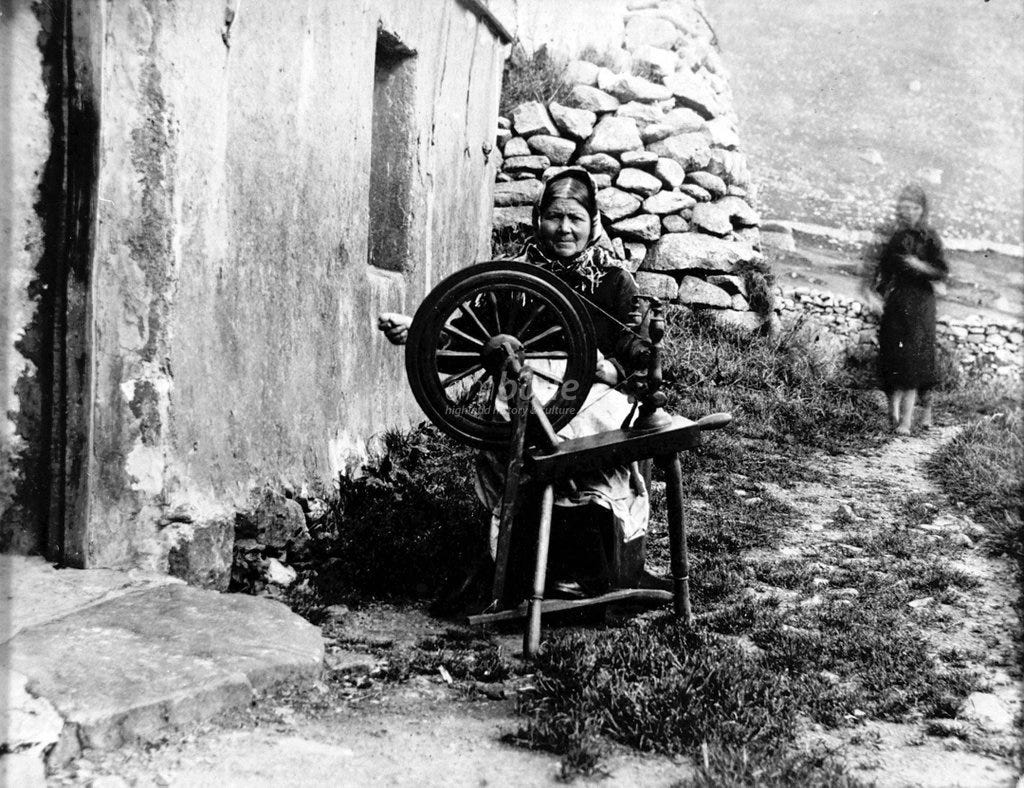
By 1930, it was clear that life on St Kilda had become untenable. Traditional livelihoods—sheep farming, wool spinning and weaving, fishing, and harvesting seabird eggs and oil—were increasingly difficult to sustain. Faced with a dwindling population and insurmountable challenges, the decision was made to evacuate the archipelago. The remaining islanders bid farewell to their ancestral home and were relocated to the mainland, marking the end of an era. With them went another unique resident - the St. Kilda house mouse, who had thrived - it subsequently vanished, its reliance on humankind revealed only once the people were gone.
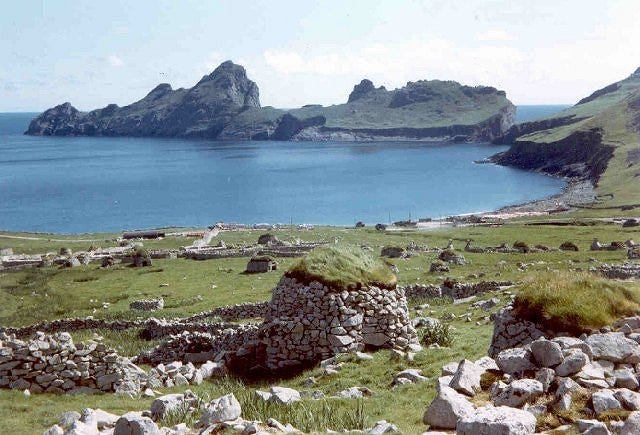
Today, St Kilda stands as a hauntingly beautiful reminder of the past, a place of solitude and natural splendour,.
The remains of the abandoned village on Hirta, the largest island, tell the story of the St Kildan community that once lived there. Stone houses, cleits (stone storage huts), and other ruins are well-preserved, offering visitors a glimpse into the harsh yet fascinating life of the islanders. The National Trust for Scotland, which manages St Kilda, maintains these structures - and works to preserve the island's unique heritage.
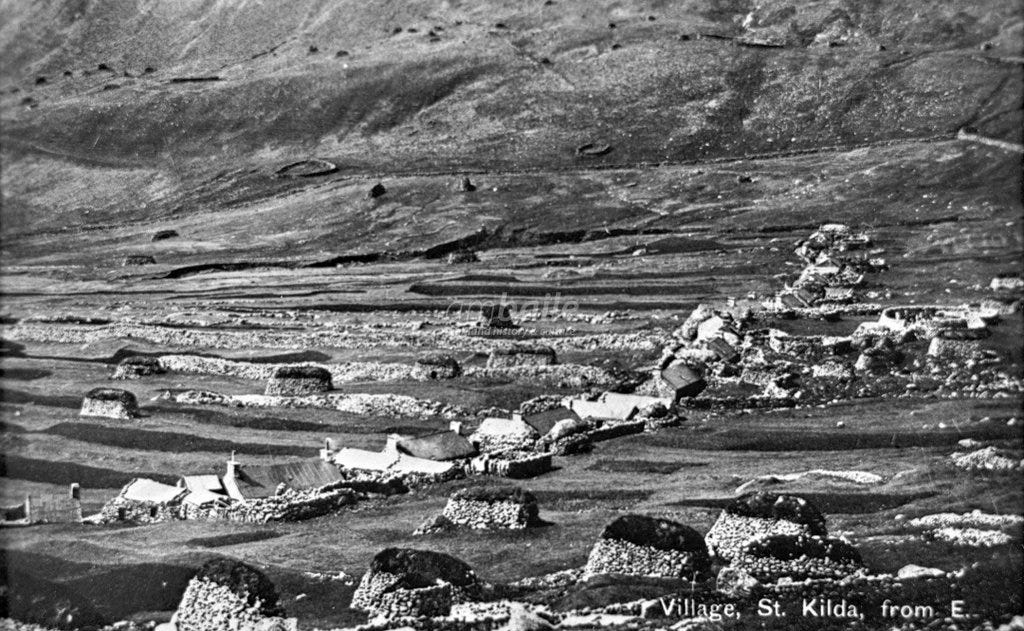
Michelle Melville is High Life Highland’s Heritage Ranger, is passionately dedicated to preserving Scottish natural and cultural heritage. A skilled artisan, Michelle excels in a range of hand crafts from carving and weaving to stained glass creation and needle felting. Her talent in these crafts forms a vital part of her role in engaging and inspiring communities to be inspired by their environment, and learn new skills and gain in confidence.



